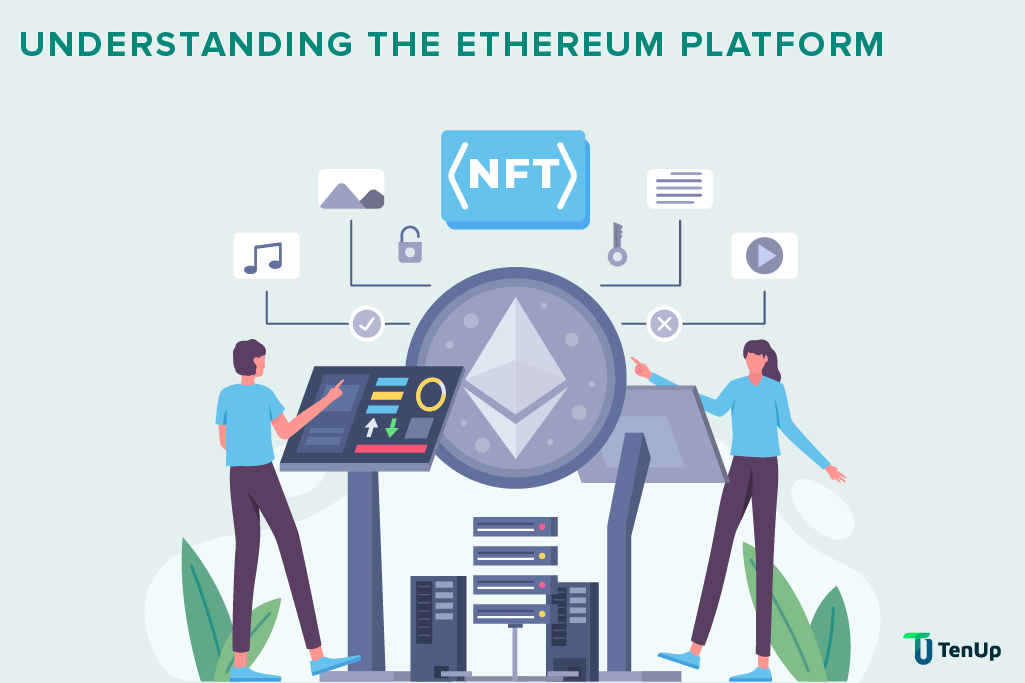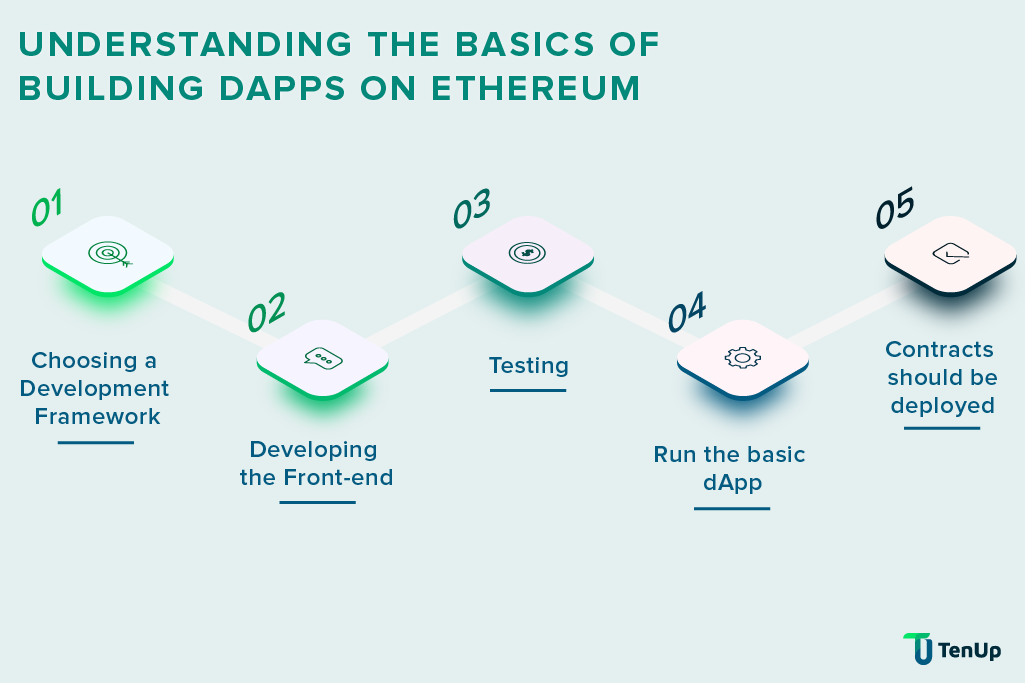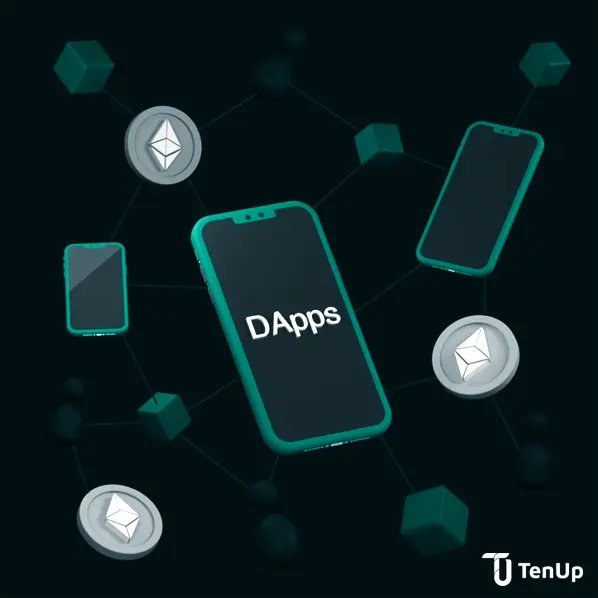Understanding the Ethereum Platform
Ethereum is an open-source, blockchain-based platform that enables the development of decentralized applications. Ethereum's cryptocurrency, Ether, is used to pay transaction fees and computational services on the platform. Smart contracts are self-executing contracts that are coded on the Ethereum blockchain.
These contracts define the rules and penalties for an agreement between parties and are executed automatically when specific conditions are met.

What are Smart Contracts?
Smart contracts are the backbone of DApps on the Ethereum platform. They are self-executing programs that run on the blockchain and facilitate the transfer of assets between parties without the need for intermediaries. To build a smart contract, you must use Solidity's programming language.
Solidity is a high-level programming language designed to write smart contracts on the Ethereum blockchain. It is similar to JavaScript in syntax and is used to write the logic for intelligent contracts. Once you have written your smart contract in Solidity, you must compile it into bytecode, which can then be deployed to the Ethereum blockchain.
Differentiation between DApps & Smart Contract
DApps and smart contracts are related concepts but are not the same.
DApps, or decentralized applications, are computer applications that run on a decentralized network, such as a blockchain, and are designed to function in a trustless and censorship-resistant manner without relying on a single point of control. They can have a wide range of use cases, from finance and gaming to supply chain management, and are typically open-source and transparent.
Smart contracts, on the other hand, are self-executing programs that are used to automate the terms of a contract. They are coded on a blockchain or distributed ledger platform. They are designed to enable the exchange of assets or value between parties without the need for intermediaries, such as banks or lawyers. Smart contracts are often used within DApps to automate transactions and enforce rules without human intervention.
Understanding the basics of building DApps on Ethereum
The Ethereum blockchain is used to create and deploy smart contracts, self-executing contracts with the terms of the agreement between buyer and seller being directly written into lines of code. Smart contracts allow DApps to run on a decentralized platform and eliminate the need for intermediaries. Solidity programming language is used to write smart contracts on Ethereum. Truffle framework and Ganache are popular development tools that facilitate the creation, testing, and deployment of smart contracts and DApps on the Ethereum blockchain.

Choosing a Development Framework
There are several development frameworks available for building DApps on the Ethereum platform. Some popular frameworks include Truffle, Embark, and DappHub. These frameworks provide developers with tools and libraries for building DApps, such as testing tools, contract deployment tools, and web3 libraries for interacting with the Ethereum network.
Truffle is a popular development framework that provides developers with a suite of tools for building DApps. It includes a development environment, testing framework, and deployment tools. Truffle also provides developers with a web3 library for interacting with the Ethereum network.
Embark is another popular development framework that provides developers with tools for building DApps. It includes a development environment, testing framework, and deployment tools. Embark also provides developers with a web3 library for interacting with the Ethereum network.
DappHub is a suite of tools for building DApps on the Ethereum platform. It includes a development environment, testing framework, and deployment tools. DappHub also provides developers with a web3 library for interacting with the Ethereum network.
Developing the Front-end
Once you have built your smart contract and chosen a development framework, you must develop the front end of your DApp. The front end is the user interface that allows users to interact with the smart contract. Again, you can use a variety of web development frameworks, such as React, Vue.js, or Angular, to develop the front end.
Testing and Deploying the DApp
Before deploying your DApp to the Ethereum network, it is essential to test it thoroughly. You can use the testing tools provided by your development framework to test your DApp. Once satisfied with the testing results, you can deploy your DApp to the Ethereum network.
Deploying a DApp on the Ethereum network requires a transaction fee in Ether. The transaction fee is used to compensate the miners for processing the transaction. Once your DApp is deployed, it will be available for anyone to use.
Use cases and examples of successful DApps built on Ethereum
CryptoKitties: CryptoKitties is a DApp that allows users to collect, breed, and trade virtual cats. Each cat is unique and owned by a single user. CryptoKitties was one of the first DApps to go viral, and it congested the Ethereum network in 2017.
Augur: Augur is a decentralized prediction market platform that allows users to bet on the outcome of events. Augur's native token, REP, incentivizes users to report on the development of events and resolve disputes.
Golem: Golem is a DApp that enables users to rent out their computer's processing power to perform tasks like rendering 3D graphics and machine learning computations. Golem's native token, GNT, is used to pay for services on the network.
Uniswap: Uniswap is a decentralized exchange that allows users to trade tokens without intermediaries. Uniswap uses an automated market maker (AMM) system that determines token prices based on supply and demand.
Critical components of building DApps on Ethereum
User interface design: The user interface of a DApp should be intuitive and easy to use. A well-designed user interface can enhance the user experience and attract more users to the DApp.
Token creation and management: Tokens are used in DApps as a means of exchange, incentivization, or governance. Ethereum provides a platform for creating and managing tokens using smart contracts.
Decentralized storage: Traditional applications store data in centralized servers, vulnerable to cyber-attacks. DApps can use decentralized storage solutions like IPFS (InterPlanetary File System) to store data on a decentralized network, which ensures greater security and transparency.
Security and testing: Security is a critical component of DApps. Smart contracts and DApps should be thoroughly tested for vulnerabilities and bugs. Tools like Mythril, Solhint, and Truffle can be used to try and secure smart contracts and DApps.
Challenges and limitations of building DApps on Ethereum
Scalability issues
One of the main challenges of building DApps on Ethereum is scalability. Ethereum currently has a limited capacity for processing transactions, which can lead to network congestion and delays. This can be problematic for DApps that require fast and reliable transaction processing. As the popularity of Ethereum and the DApps built on it continues to grow, scalability will become an increasingly important issue.
To address this issue, Ethereum developers are working on several solutions, such as sharding, which involves splitting the blockchain into smaller, more manageable parts, and Ethereum 2.0, which will use a new consensus mechanism called Proof of Stake (PoS) to increase the speed and efficiency of the network.
Gas fees
Another challenge of building DApps on Ethereum is the cost of gas fees. Users pay gas fees to execute transactions on the Ethereum network. These fees are determined by the complexity of the trade and the number of computational resources required to complete it.
Regulatory concerns
DApps built on Ethereum, like all blockchain-based technologies, may face regulatory scrutiny and legal challenges. Different jurisdictions have different laws and regulations around cryptocurrencies and blockchain technology, which can create uncertainty for DApp developers.
Despite these challenges, the potential benefits of building DApps on Ethereum, including increased transparency, security, and efficiency, make it a compelling platform for developers.
Conclusion
Building decentralized applications (DApps) on Ethereum is challenging but exciting. Ethereum's smart contract functionality and decentralized infrastructure provide a powerful platform for developers to create innovative and secure applications.
However, there are several challenges that developers must address, including scalability issues, high gas fees, and regulatory concerns. These challenges can make it difficult to build DApps that are both functional and accessible to users.
Building DApps on Ethereum requires a deep understanding of blockchain technology, smart contract development, and the Ethereum network. However, developers up for the challenge can be at the forefront of a new era of decentralized applications that can transform how we interact with digital services and each other.

